
cd_nom
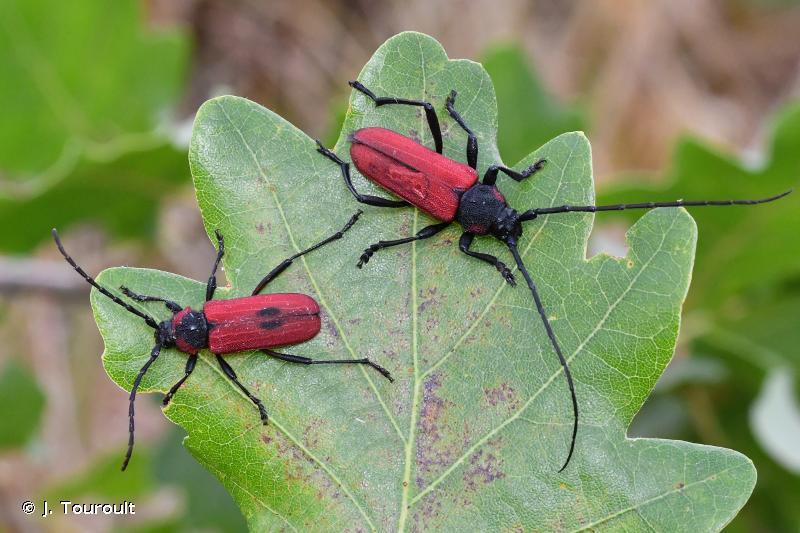
| Author : J. Touroult |
 |
To get the picture, please visit:
Julien Touroult
UMS PatriNat (AFB - CNRS - MNHN)
Muséum national d'Histoire naturelle, CP41, 36 rue Geoffroy Saint-Hilaire, 75005 Paris
Legend: Couple. Chênaie pubescente du Lot.
Despite the Creative Commons license, please inform the author of the use which will be made of his photo
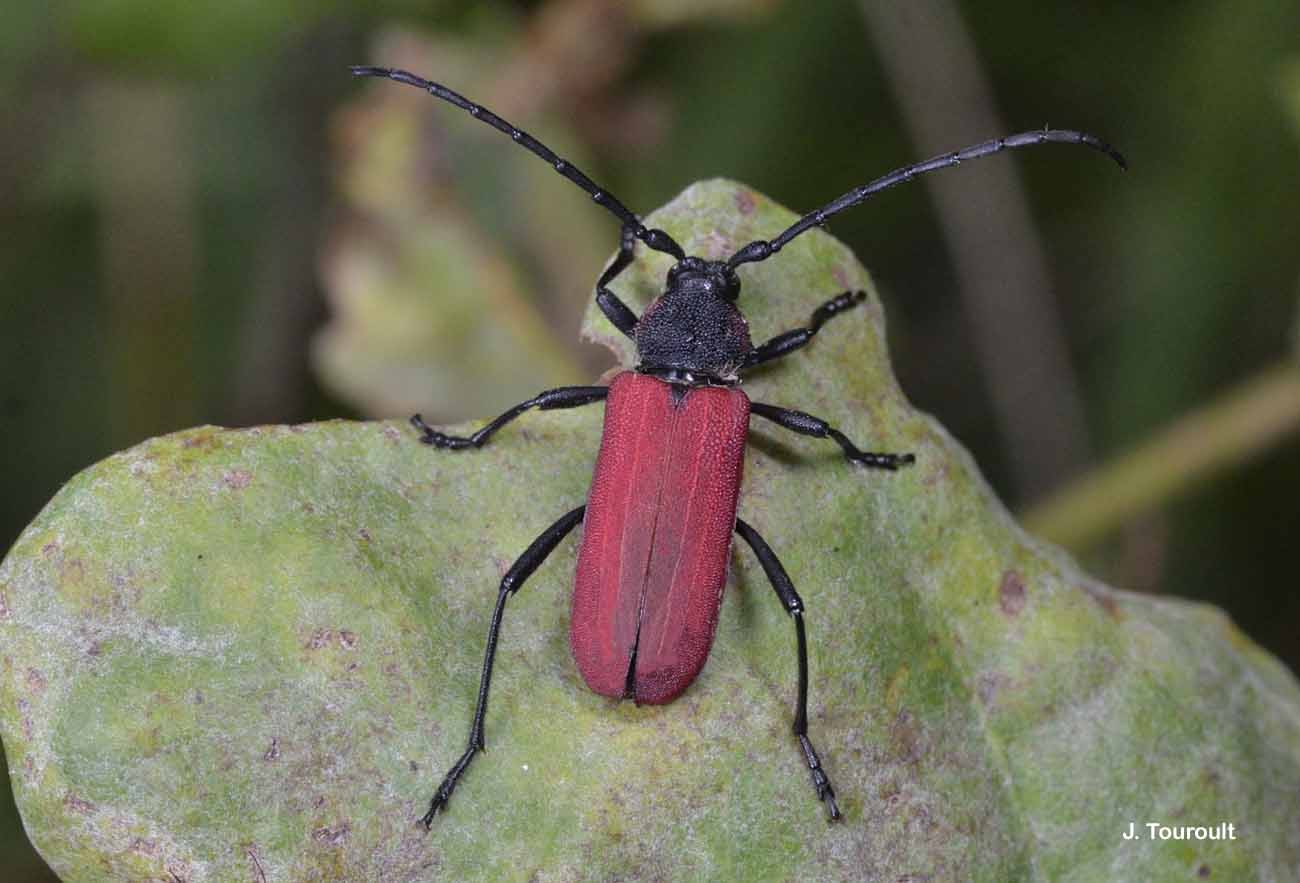
| Author : J. Touroult |
 |
To get the picture, please visit:
Julien TOUROULT
Muséum national d'Histoire naturelle - Service du Patrimoine Naturel
36 rue Geoffroy Saint-Hilaire
CP 41
75 231 PARIS CEDEX 05
e-mail : inpn@mnhn.fr
Legend: Femelle, forme « ruber »
Despite the Creative Commons license, please inform the author of the use which will be made of his photo
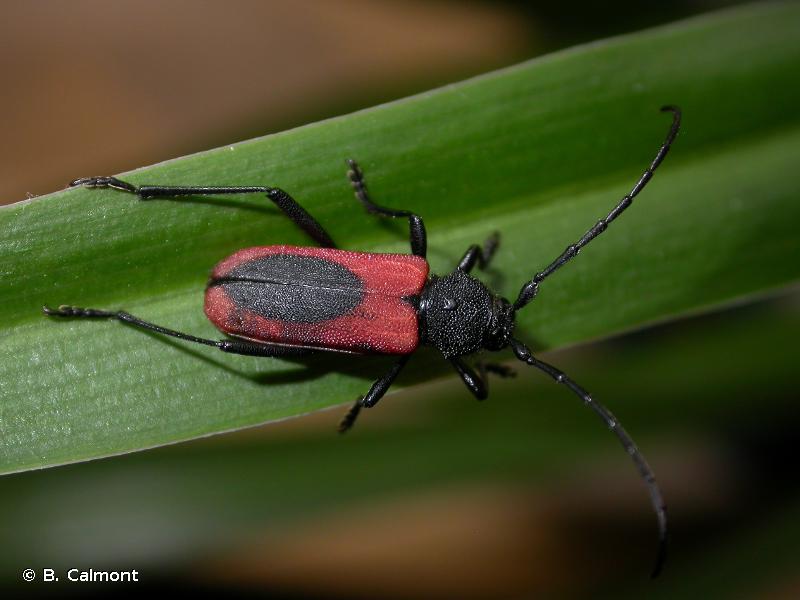
| Author : B. Calmont |
 |
To get the picture, please visit:
Benjamin Calmont
email : inpn@mnhn.fr
Despite the Creative Commons license, please inform the author of the use which will be made of his photo
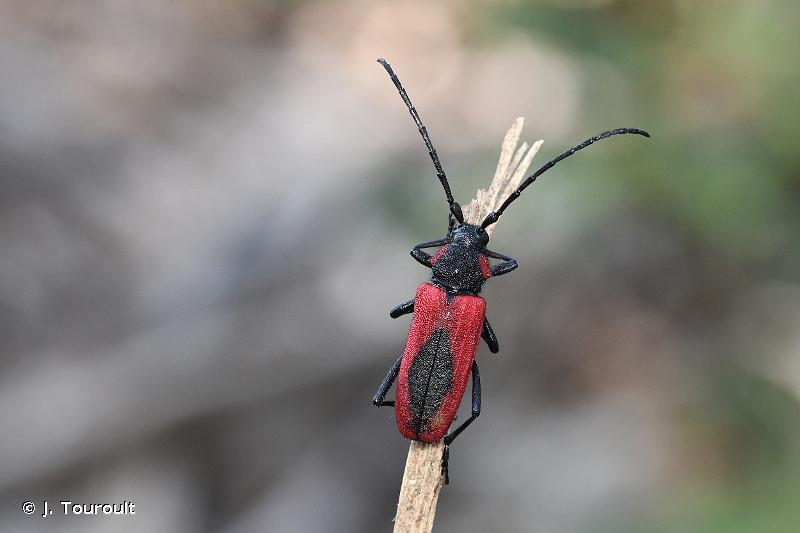
| Author : J. Touroult |
 |
To get the picture, please visit:
Julien Touroult
UMS PatriNat (OFB - CNRS - MNHN)
CP41, 36 rue Geoffroy Saint-Hilaire, 75005 Paris
Legend: Drôme.
Despite the Creative Commons license, please inform the author of the use which will be made of his photo
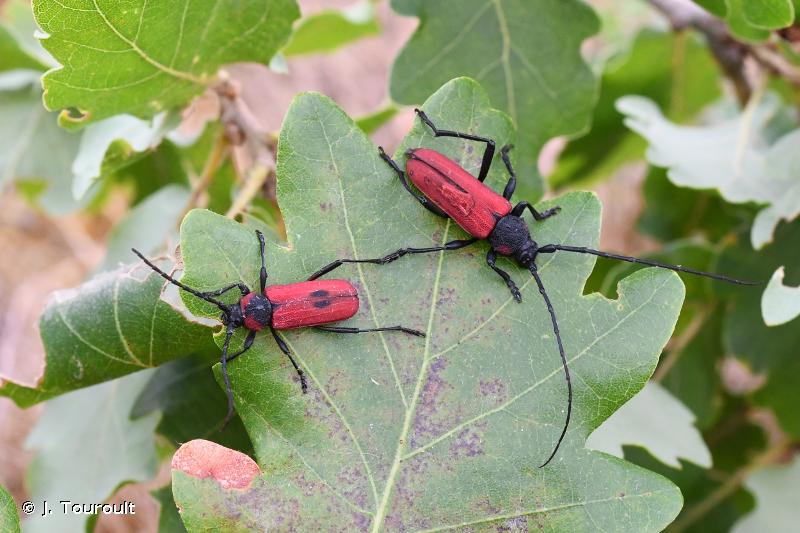
| Author : J. Touroult |
 |
To get the picture, please visit:
Julien Touroult
UMS PatriNat (AFB - CNRS - MNHN)
Muséum national d'Histoire naturelle, CP41, 36 rue Geoffroy Saint-Hilaire, 75005 Paris
Legend: Couple. Chênaie pubecente, Lot.
Despite the Creative Commons license, please inform the author of the use which will be made of his photo
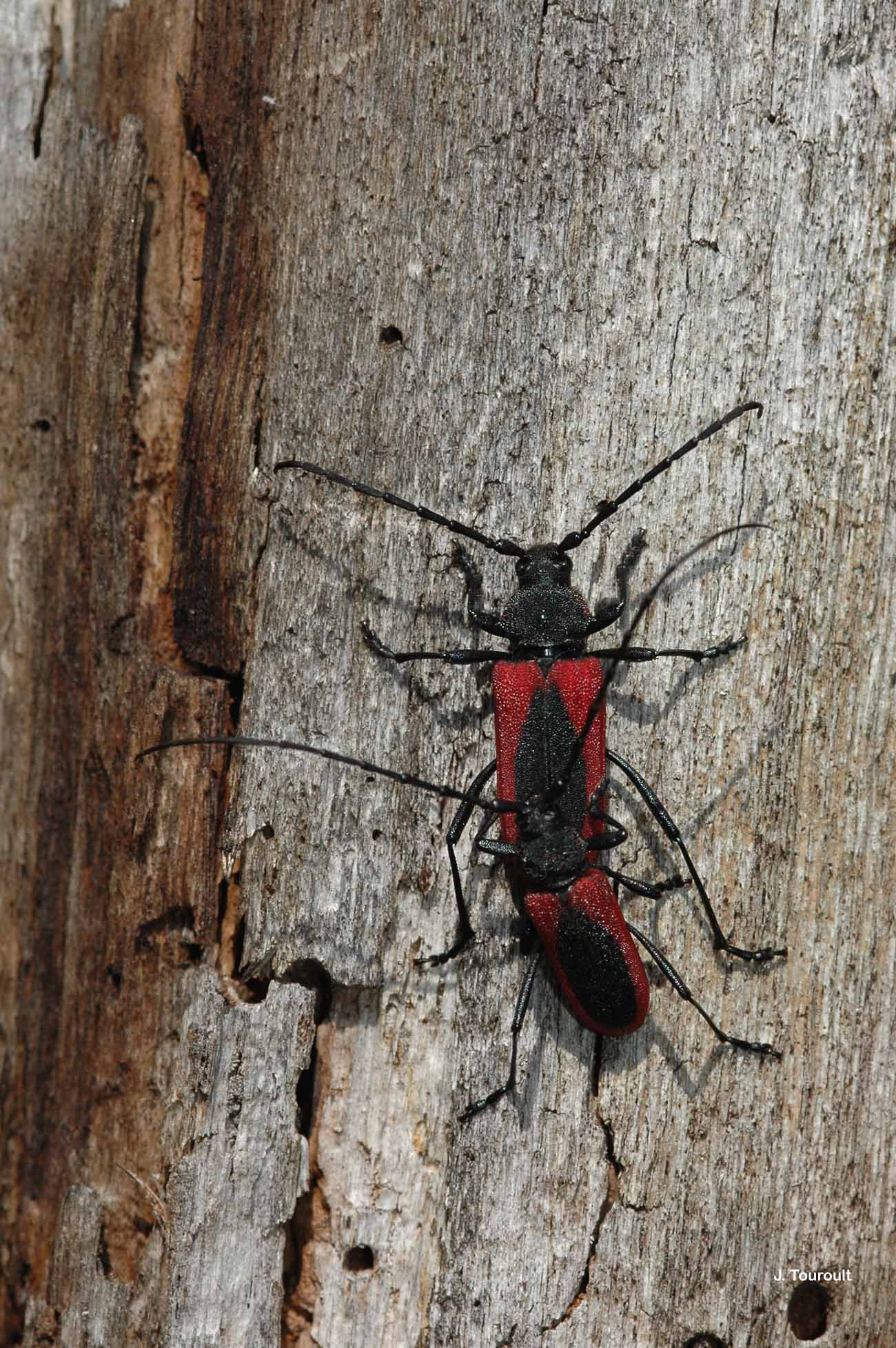
| Author : J. Touroult |
 |
To get the picture, please visit:
Julien TOUROULT
Muséum national d'Histoire naturelle - Service du Patrimoine Naturel
36 rue Geoffroy Saint-Hilaire
CP 41
75 231 PARIS CEDEX 05
e-mail : inpn@mnhn.fr
Despite the Creative Commons license, please inform the author of the use which will be made of his photo
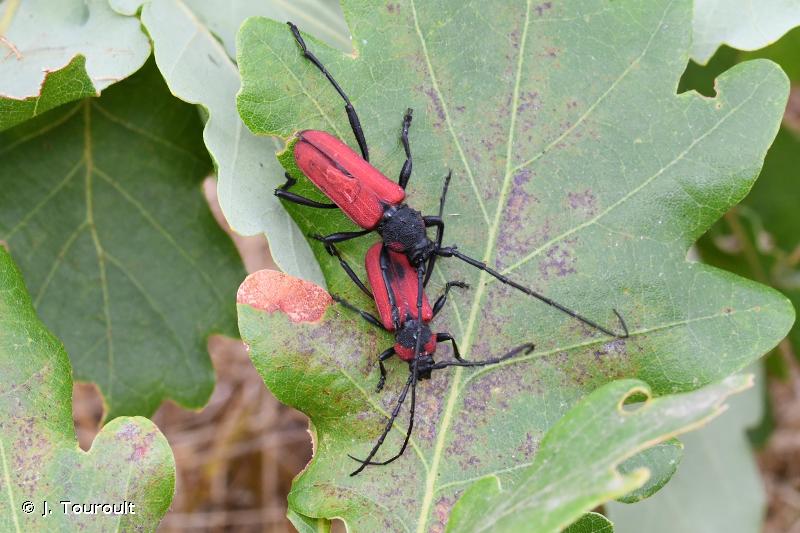
| Author : J. Touroult |
 |
To get the picture, please visit:
Julien Touroult
UMS PatriNat (AFB - CNRS - MNHN)
Muséum national d'Histoire naturelle, CP41, 36 rue Geoffroy Saint-Hilaire, 75005 Paris
Legend: Couple. Chênaie pubescente du Lot.
Despite the Creative Commons license, please inform the author of the use which will be made of his photo
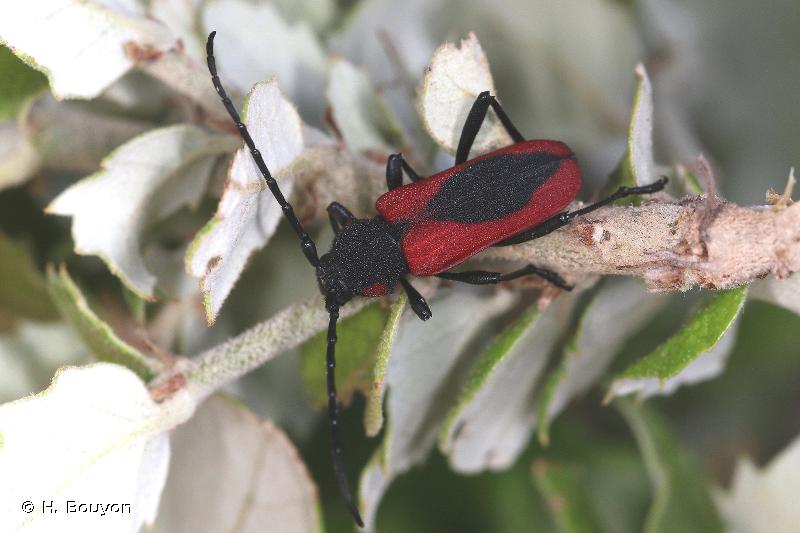
| Author : H. Bouyon |
 |
To get the picture, please visit:
Any reuse of one or more photographs on this site is subject to an authorization request from the author.
Link to the Code of Intellectual Property (Legifrance)
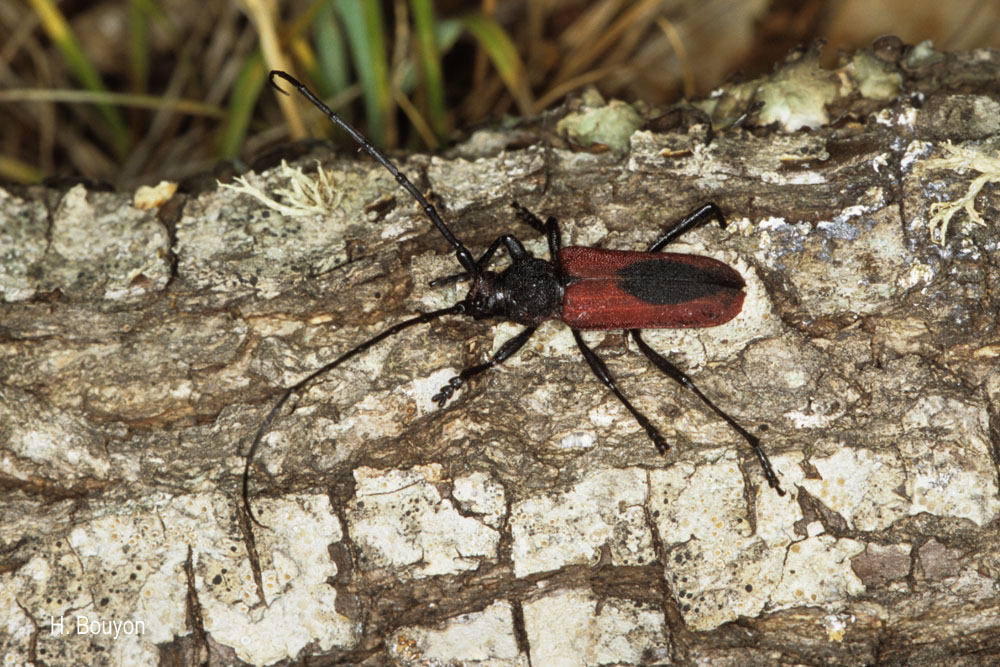
| Author : H.Bouyon |
 |
To get the picture, please visit:
Bouyon Hervé
herve.bouyon@wanadoo.fr
Any reuse of one or more photographs on this site is subject to an authorization request from the author.
Link to the Code of Intellectual Property (Legifrance)
Taille : 8 -21 mm
Longicorne à stature large et trapue, à tête, antennes et pattes robustes noires. Le pronotum irrégulier à tubercules coniques latéraux bien développés est noir, parfois taché de rouge. Le disque est glabre. Les élytres rouges possèdent une tache ovale noire n'atteignant ni la base ni l'apex des élytres. Espèce à coloration très variable.
Confusion possible avec les deux autres Purpuricenus français, tout particulièrement le P. globulicollis dont il se distingue par la forme du thorax et la stature allongée et parallèle.
Les adultes sont actifs de juin à août.
La larve saproxylique se développe dans les branches et branchettes mortes de nombreux feuillus (orme, chêne, robinier, châtaignier, prunier, peuplier, saule, figuier, noisetier, noyer, aubépine…). Les adultes sont rarement floricoles, on les rencontre parfois sur les saules blessés ou les exsudats de sève. Le cycle biologique demande deux ou trois années.
Espèce à large répartition en Europe centrale et méridionale. En France, elle se rencontre sur une large moitié méridionale, en particulier dans les chênaies thermophiles. Souvent abondante par piégeage alimentaire, elle est cependant très rarement observée par recherche visuelle.
D'après :
Berger, P. 2012. Coléoptères Cerambycidae de la faune de France continentale et de Corse - Actualisation de l'ouvrage d'André Villiers, 1978. Revue de l'Association Roussillonnaise d'Entomologie, supplément tome XXI, 664 p.
L. Valladares (EIPurpan (UMR INRA / INPT 1201 Dynafor)),2020
Continental
Metropolitan France
Overseas
Marine
Metropolitan France
Overseas
The map presents a summary at the 10 x 10 km grid of the observation data for the species transmitted to the SINP. These data have been subjected to validation filters.
The map presents a reference distribution layer of the species at the scale of departments and marine sectors. The presence and absence data were established by expertise within a network of partners. This reference distribution is used in the validation process of the SINP data at the INPN level.
Corresponds to a report on the basis of at least one observation proved within a period of 10 years (20 years for little-known invertebrates) preceding the year and no presumption of extinction since obtaining the last data nor doubt on reproductive and implemented nature of this population. For migratory species, the presence indicated concerns areas of reproduction.
This status is based on one or more of the following criteria:
This point covers the absence, more difficult by nature to demonstrate than presence. This status is based on one or more of the following criteria:
This status must be assigned to a department in which the presence of the species is casual.
Particular case of absence due to a proven extinction less than a half century ago (older disappearances are treated as "no probable or definite").
In the state of knowledge, we can not comment on the presence or absence in the current department. This is the default status when not comprised in one of the previous categories or whenever there is doubt.
The map shows the global distribution of the species based on GBIF data (Global Biodiversity Information Facility).
